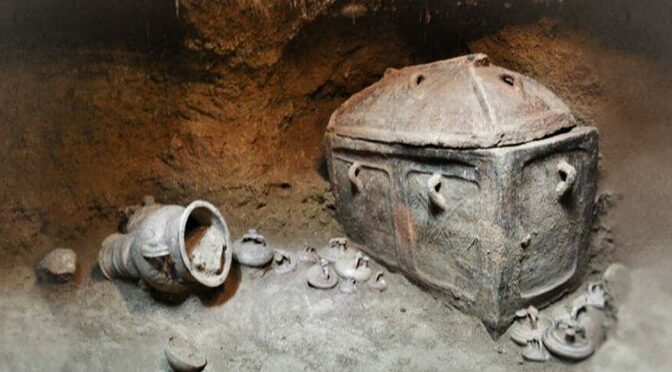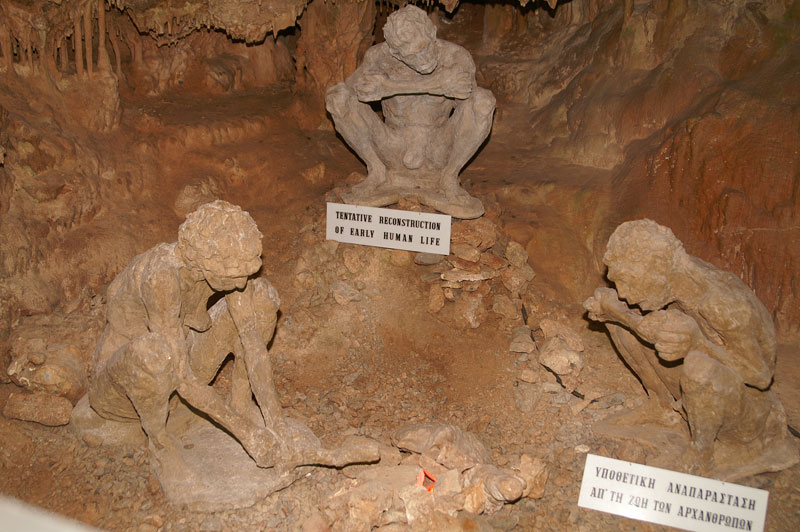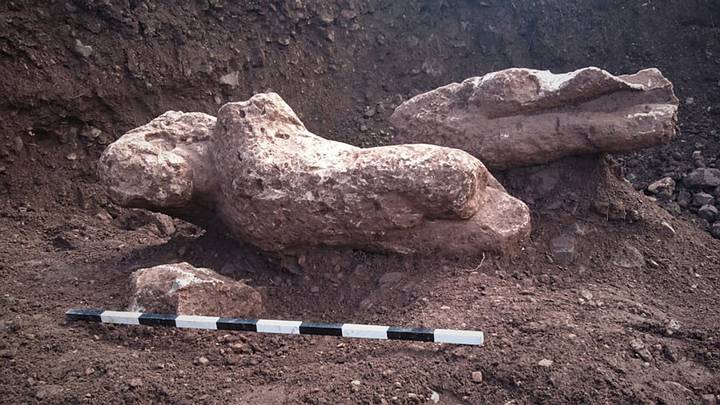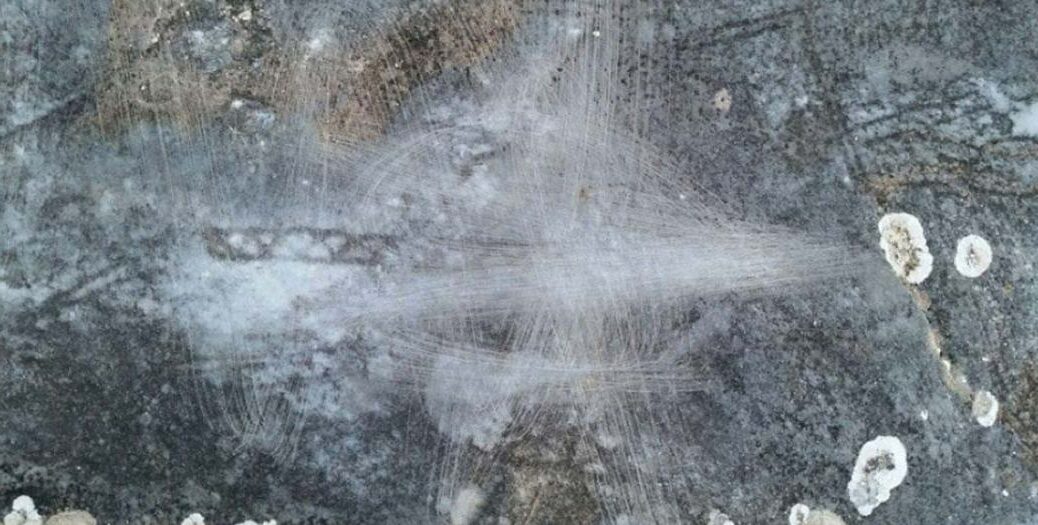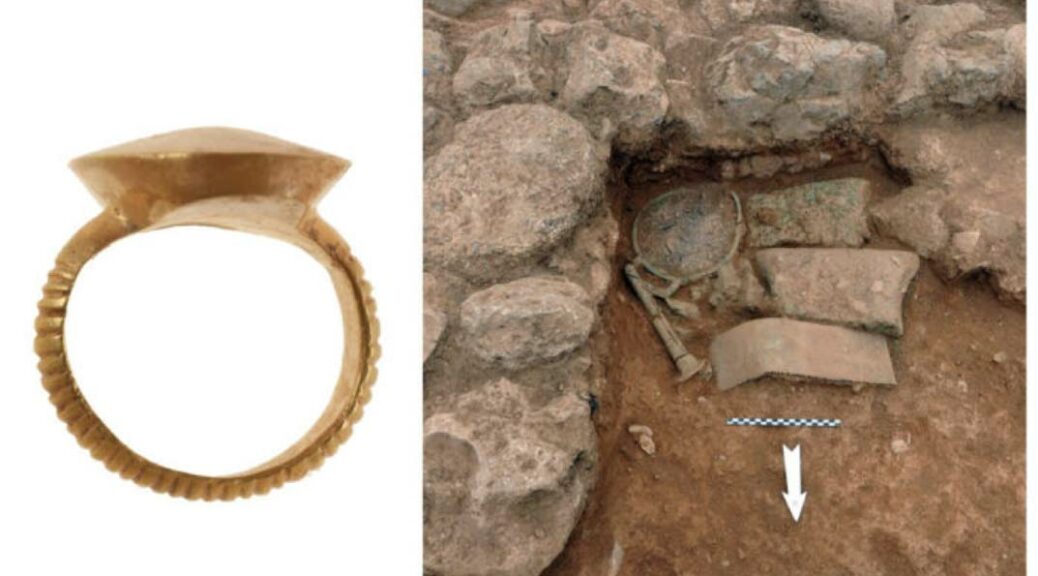Greek Farmer Accidentally Discovers 3,400-Year-Old Minoan Tomb Hidden Under Olive Grove
Sometime between 1400 and 1200 B.C., two Minoan men were laid to rest in an underground enclosure carved out of the soft limestone native to southeast Crete.
Both were entombed within larnakes—intricately embossed clay coffins popular in Bronze Age Minoan society—and surrounded by colorful funerary vases that hinted at their owners’ high status. Eventually, the burial site was sealed with stone masonry and forgotten, leaving the deceased undisturbed for roughly 3,400 years.
When a farmer was parking his truck under some olive trees on his property when the ground beneath him started to give way. After the farmer moved his vehicle to a safer location, he saw that a four-foot-wide hole had opened up in the ground. When he peered inside, he realized this was no ordinary hole.

The farmer called in archaeologists from the local heritage ministry to investigate, and they began excavating what turned out to be an ancient Minoan tomb, carved into the soft limestone, which had been lying hidden for millennia.
Two adult Minoan men had been placed in highly-embossed clay coffins called “larnakes” which were common in Bronze Age Minoan culture. These, in turn, were surrounded by funerary vases which suggest that the men were of high status.

The tomb was about 13 feet in length and eight feet deep, divided into three chambers that would have been accessed via a vertical tunnel that was sealed with clay after the tomb’s occupants were laid to rest.
One larnax was found in the northernmost chamber, with a number of funerary vessels scattered around it.
The chamber at the southern end of the tomb held the other larnax coffin, along with 14 amphorae and a bowl. The tomb was estimated to be about 3,400 years old and was preserved in near-perfect conditions, making it a valuable find.

Kristina Killgrove, a bioarchaeologist, wrote for Forbes that the ornamentation on the artifacts found in the tomb suggests that its inhabitants were men of wealth.
The fanciest tombs from the same period, however, had massive domed walls in a “beehive” style, which this tomb doesn’t, so they probably weren’t among the wealthiest.
The find dates from the Late Minoan Period, sometimes called the Late Palace Period.
In the earlier part of that era, the Minoan civilization was very rich, with impressive ceramics and art, but by the later part of the period, there is an apparent decline in wealth and prestige, according to Killgrove.
It’s believed that civilization was weakened by a combination of natural disasters, including a tsunami triggered by an earthquake, and the eruption of a nearby volcano. This made it easier for foreigners to come in and destroy the palaces.

Locals don’t anticipate the discovery of any more tombs of this type, but the area is known to be the home of a number of antiquities, and a great deal of them have been found by coincidence, as with this find.
The Deputy Mayor of Local Communities, Agrarian, and Tourism of Ierapetra pointed out that the tomb had never been found by thieves, and went on to say that it would probably have remained undiscovered forever, except for the broken irrigation pipe that was responsible for the softened and eroded soil in the farmer’s olive grove.

He went on to say how pleased they were with having the tomb to further enrich their understanding of their ancient culture and history, and that the tomb was proof for those historians who didn’t think that there had been Minoans in that part of Crete.
Previously, it had been thought that the Minoans only settled in the lowlands and plains of the island, not in the mountains that surround Ierapetra, although there was an excavation in 2012 that uncovered a Minoan mansion in the same area.
Killgrove will be analyzing the skeletons, to see what further information can be gleaned from them. She said, “As a bioarchaeologist, I routinely pore over the skeletons of ancient populations so that I can learn about their health, diet, and lifestyles.” It’s also hoped that analysis can contribute more information to the research on Minoan and Mycenaean origins.
